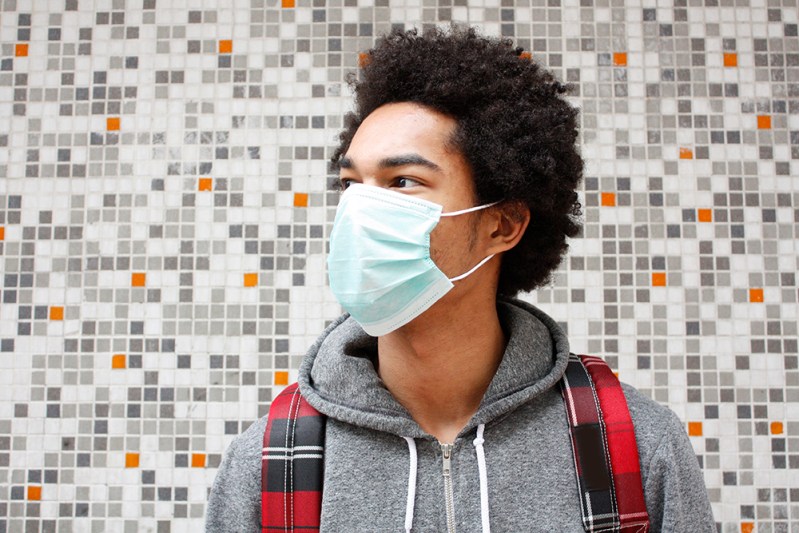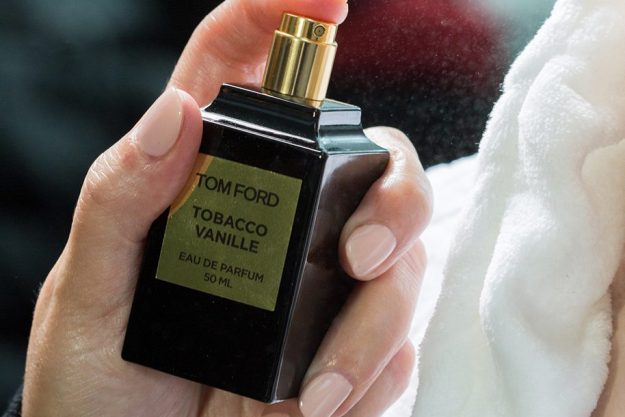
A story recently appeared on the website WWD about a Swiss pajama company. The opening paragraph stated that “… antiviral fabric treatments … have become a must-have due to the coronavirus pandemic.” The article, an interview with the sleepwear brand’s chairman and cofounder, then went on to dance around the antivirus topic, discussing the advantages of antibacterial properties, the difference between viruses and bacteria, the potential for use of antiviral fabrics in making masks., etc. Other than a reference to something called Viroblock, the article never did come out and say where one could find said antiviral “must-haves.”
There’s a reason. As much as we might want these antiviral fabrics, those that have been developed haven’t even been approved for consumer use in the United States. If you’re waiting for antiviral jammies, you may be waiting even longer than you will for a coronavirus vaccine. We caught up with Dr. Robert Monticello, the Senior Scientific Consultant of the International Antimicrobial Council (IAC) and President of Consolidated Pathways to talk about why you won’t find these products on the U.S. market yet, whether that matters, and why you may want to think twice before you reuse your hotel towel again.
Monticello has his Ph.D. in microbiology and biochemistry. At the IAC he works with manufacturers on the production and responsible use of antimicrobial textiles, and on writing the testing methods that such companies would use to be sure their products are effective. His day job with Consolidated Pathways is to be a brand representative for several chemical companies that provide these technologies.
“There’s a lot of hokeyness and some truth to a lot of companies’ antiviral claims,” says Monticello. “Are they antiviral? In most cases, yes. From a technical side. But you cannot make those claims in the United States. It’s against the law, and you can be fined for doing so.”
Monticello himself is working on developing the testing method to see if a fabric is effective specifically against SARS-CoV-2, the virus that causes COVID. Problem number one? Most lab workers don’t have the facilities necessary to work safely with the virus. “There are some effective and safe technologies that could make antiviral textiles, but there are some great challenges when testing these technologies directly against the virus. We can test against influenza (H1N1), for example, so we are looking at identifying certain surrogate viruses that we can use to simulate the COVID virus so we can safely test such textiles.” After all, we wouldn’t want a team of fabric testers to suffer through COVID just so you and I can wear our antiviral ‘fits around town.
But here’s where it gets tricky. You’ve probably heard some of your favorite activewear or outdoor brands celebrating antimicrobial technology that is meant to cut down on workout stank. While we can talk about odor control, brands can’t actually use the term antimicrobial in their labeling because that is what Monticello describes as a health claim (versus an aesthetic claim) which would make it subject to Environmental Protection Agency regulations. Monticello points out that those rules are not as strict in places like China or India, so occasionally those sorts of claims might slip through.
Why all the rules? As the WWD article states, “it can feel like the Wild West with hundreds of brands producing masks or clothing with antiviral claims going unchecked.”
“Is your product EPA registered? If not, is it even safe to be used close to the skin? There are treatments like particle nano-silver charging (that may kill viruses) but should it even be used on textiles? Is the cure worse than the disease? You could also wrap yourself in a shirt drenched in bleach, but that might not be very good for you.”
That’s not to say that antiviral fabrics might not make their way to us eventually. Monticello points out that if someone infected with the coronavirus were to sneeze on a piece of cotton cloth, the virus could remain infectious for up to six hours. These technologies might still allow it to survive for thirty minutes.
The good news is that concerns about transmitting the virus through touch have lessened recently. Even the WWD piece points out that “the virus can remain on some hard surfaces for up to 72 hours, so far, evidence suggests that it’s harder to catch the virus from a soft surface (such as fabric) than it is from frequently touched hard surfaces like elevator buttons or a door handle.”
Now, let’s talk about what you should be worried about. “Microbes are living things (versus a virus which isn’t and needs the host human cell to survive). If you can, be sure your clothes are treated with an EPA-registered antimicrobial agent before you wear them. Otherwise, the moment you wear something and wash it, you have contaminated it forever. We’ve done tests that show if you wash shirts and underwear together, microbes from the underwear get onto the shirts and never go away. If your workout shirt isn’t treated with one of these technologies, within 20 minutes of starting your hot, sweaty workout, you’ve created a perfect environment for the bacteria that are already on that fabric to grow.”
Part of the problem is that detergents aren’t what they used to be: We’ve removed many of their most “effective” ingredients because they are toxic, both to us and the environment. We’ve also lowered water temperatures, so they also don’t kill all the germs. “Essentially each piece of clothing develops its own ‘biome.’”
You’ve probably heard the term biome applied to communities of plants and animals, like tundra or a tropical rain forest. Humans have a microbiome of our own — crawling around on our skin and in our bodily fluids — that includes lots of helpful microorganisms that keep us healthy. Monticello points out that much of our clothing now has a microbiome of its own living on the surface.
Here’s the part where it gets yucky. When you stay at a hotel (remember those?), management will often suggest that you save the planet by hanging your towel up. Reusing your towel eliminates the need for a one-use washing; saving water, the energy to heat that water, and flushing detergent chemicals into the environment. You may want to think twice about being so responsible.
“The hot, humid environment of the bathroom is going to guarantee the growth of bacteria; somebody else’s bacteria, in fact,” says Monticello.”
So yes, you’ll be saving the planet, as well as saving your biome and that of the last few people who have used that towel. Luckily for all of us, Monticello and Consolidated Pathways are working with towel manufacturers who want to treat their products with EPA-approved antimicrobial agents.
Editors' Recommendations
- Men can wear pink, too: 8 ways to channel Ryan Gosling and the Barbiecore style trend
- 8 Fool-Proof Ways To Wear a Bandana (Yes, You Can Pull It Off)
- What to Know About Wearing a Face Mask for Coronavirus


